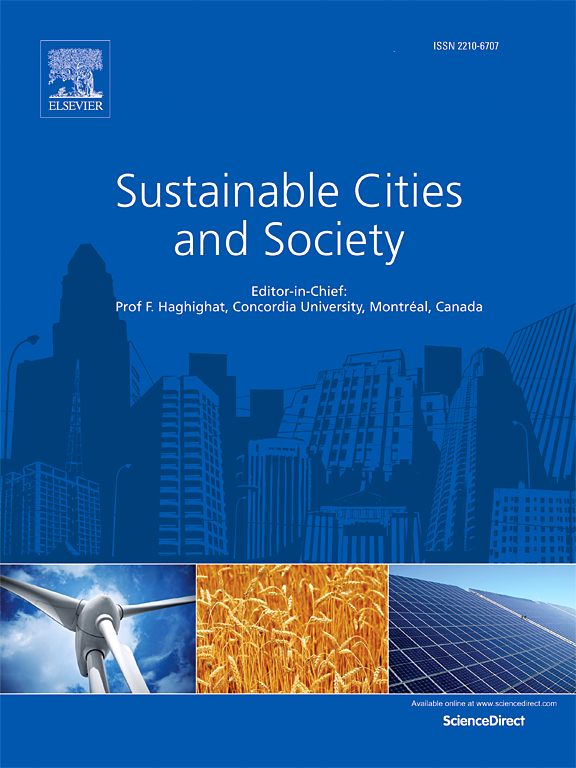Revealing the impacts of 3D urban morphology on surface temperature considering geometry heterogeneity, component contribution, and scale effect
IF 10.5
1区 工程技术
Q1 CONSTRUCTION & BUILDING TECHNOLOGY
引用次数: 0
Abstract
3D urban morphology profoundly alters the urban thermal environment by reshaping the local heat flux and surface energy balance. However, the impacts of geometry heterogeneity of buildings, component contribution, and scale effect of 3D urban morphology on surface temperature remain largely unknown. To address these issues, this study employed ENVI-met to simulated the thermal environment of 117 heterogenous urban scenes and estimated the impacts of 3D urban morphology indicators. These scenes were parametrically generated with a range of building height (BH), size (BS) and interval (BI) in order to construct a controllable and heterogenous sample set of 3D urban morphology. The results indicate that (1) Sky view factor (SVF), aspect ratio (AR), and floor area ratio (FAR) cause smaller building geometry heterogeneity losses than other indicators at a fine scale; (2) The contribution of 3D urban morphology indicators to the floor, wall and roof temperature differs, with a ratio of about 43.84 %, 49.01 %, 7.15 %; (3) Scale effect significantly affect the contribution of urban 3D morphological indicators to surface temperature, yet exert minimal influence on the performance in characterizing building geometry. These results reveal the interaction regularity between 3D urban morphology and surface temperature, and provide a valuable reference for multi-scale simulation of urban surface temperature.

求助全文
约1分钟内获得全文
求助全文
来源期刊

Sustainable Cities and Society
Social Sciences-Geography, Planning and Development
CiteScore
22.00
自引率
13.70%
发文量
810
审稿时长
27 days
期刊介绍:
Sustainable Cities and Society (SCS) is an international journal that focuses on fundamental and applied research to promote environmentally sustainable and socially resilient cities. The journal welcomes cross-cutting, multi-disciplinary research in various areas, including:
1. Smart cities and resilient environments;
2. Alternative/clean energy sources, energy distribution, distributed energy generation, and energy demand reduction/management;
3. Monitoring and improving air quality in built environment and cities (e.g., healthy built environment and air quality management);
4. Energy efficient, low/zero carbon, and green buildings/communities;
5. Climate change mitigation and adaptation in urban environments;
6. Green infrastructure and BMPs;
7. Environmental Footprint accounting and management;
8. Urban agriculture and forestry;
9. ICT, smart grid and intelligent infrastructure;
10. Urban design/planning, regulations, legislation, certification, economics, and policy;
11. Social aspects, impacts and resiliency of cities;
12. Behavior monitoring, analysis and change within urban communities;
13. Health monitoring and improvement;
14. Nexus issues related to sustainable cities and societies;
15. Smart city governance;
16. Decision Support Systems for trade-off and uncertainty analysis for improved management of cities and society;
17. Big data, machine learning, and artificial intelligence applications and case studies;
18. Critical infrastructure protection, including security, privacy, forensics, and reliability issues of cyber-physical systems.
19. Water footprint reduction and urban water distribution, harvesting, treatment, reuse and management;
20. Waste reduction and recycling;
21. Wastewater collection, treatment and recycling;
22. Smart, clean and healthy transportation systems and infrastructure;
 求助内容:
求助内容: 应助结果提醒方式:
应助结果提醒方式:


